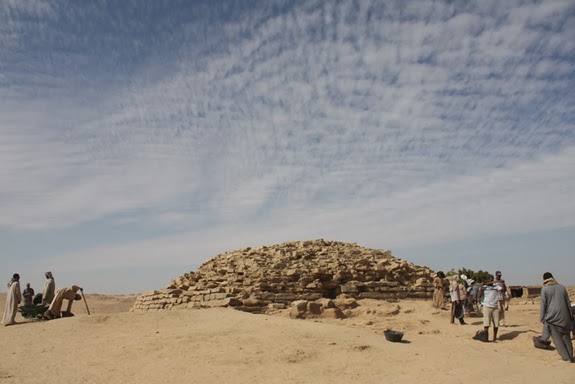A step pyramid has been discovered by archaeologists, who are working near the ancient settlement of Edfu in Southern Egypt. This step pyramid is expected to be 4600 years old predating Great Pyramid of Giza by atleast a few decades.
This step pyramid, which once stood as high as 43 feet (13 meters), is one of seven so-called ‘provincial’ pyramids built by either the pharaoh Huni (reign ca. 2635-2610 B.C.) or Snefru (reign ca. 2610-2590 B.C.). Over time, the step pyramid's stone blocks were pillaged, and the monument was exposed to weathering, so today, it's about 16 feet that is 5 m tall only.
The provincial pyramids are located near major settlements, scattered throughout the central and southern Egypt. They have no internal chambers and were not intended for burial. There are seven pyramids in which six are almost identical dimensions including the newly uncovered one at Edfu.
Though scholars knew of the existence of the pyramid at Edfu, the structure had never been excavated before Marouard's team started work in 2010, he said in the study. His team found that the pyramid was covered by a thick layer of sand, modern waste and remains from the pillaging of its blocks.
It didn't look like a pyramid he said, and people in a nearby village even thought the structure was the tomb of a sheikh, a local Muslim saint. As the team went to work cleaning the monument, the ancient pyramid was revealed.
The team also found hieroglyphic graffiti incised on the outer faces of the pyramid. The inscriptions are located beside the remains of babies and children who were buried at the foot of the pyramid. The researchers think the inscriptions and burials date to long after the pyramid was built and that the structure was not originally intended as a burial place.




0 comments:
Post a Comment